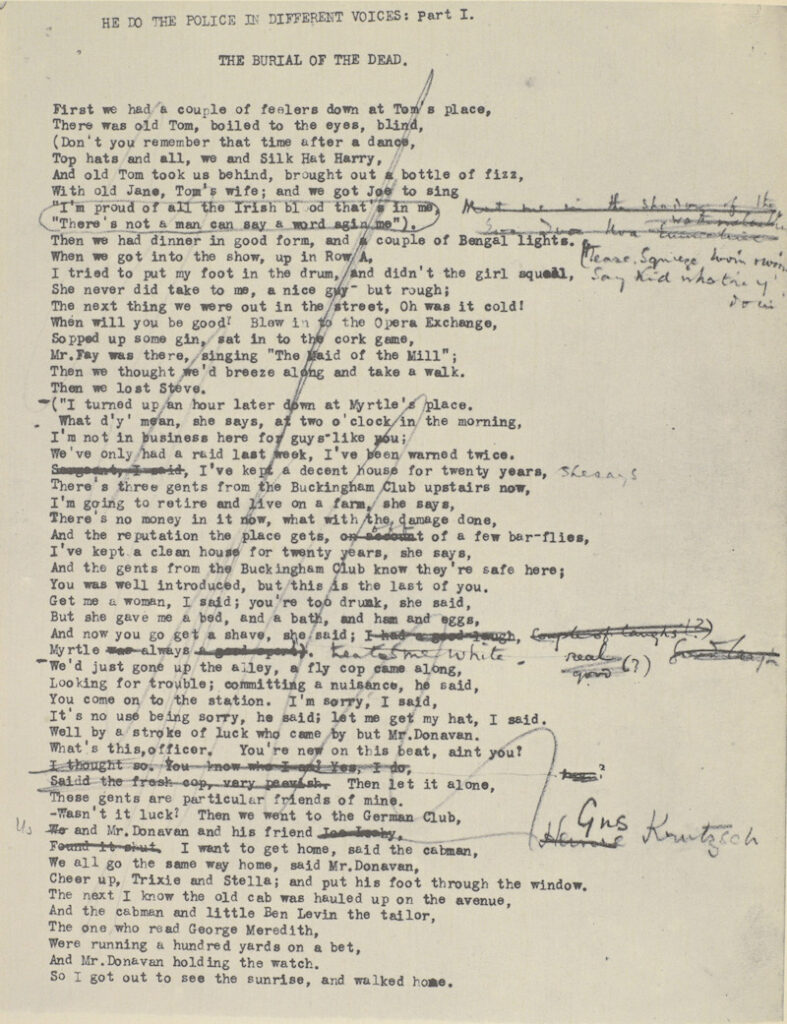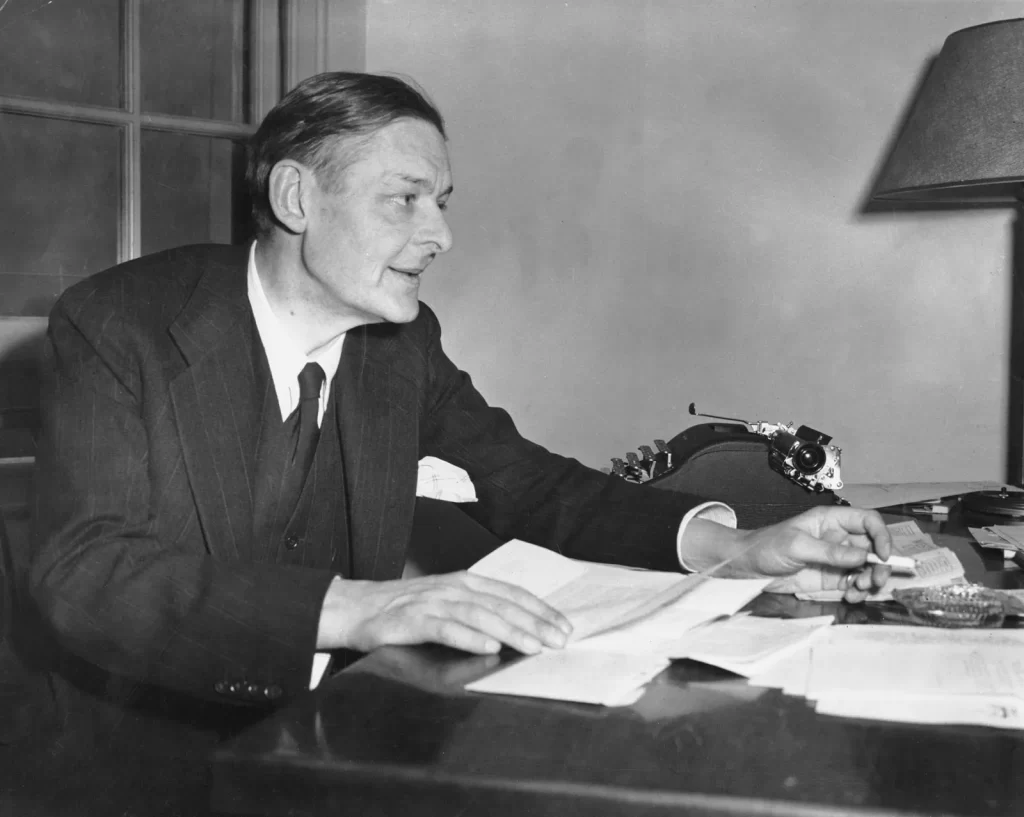Art is long, and Time is fleeting, Longfellow wrote, and we’d already read it—words largely if not entirely lost on the average university freshman. It was 1989, and I was still laboring under the illusion that I’d soon be practicing L.A. Law. Thus, majoring in English was a strategic move, as well as the only feasible option for one seemingly allergic to anything that involved counting or configuring. At eighteen, it seemed, all I had was time, and a full lifetime to eat these words, easy and tasty, like so much candy. English 101 had been a breeze and as I moved on to the 200-level courses, my confidence grew. Hawthorne? Melville? Whitman? All familiar friends. More of this, I thought, as we dove deeper into the canon of American Lit. Eventually, we had worked our way through the 1800’s, and, as we entered terrain both familiar (Gatsby and his greatness) and not (what exactly did The Sound and Fury signify?), I remember the professor attempting to steady us for the next assignment. (The anthology, too, offered some obligatory words of explanation and encouragement, a textual aperitif.)
I wasn’t prepared, and couldn’t have been prepared, just as I imagine the majority of readers were not prepared, in 1922, when “The Waste Land” appeared, immediately and irrevocably altering the literary landscape. Like other early 20th Century touchstones, including Joyce’s Ulysses and Stravinsky’s The Rite of Spring, it was by design both confrontational and paradigmatic, meant to send shock waves that would reverberate long after initial exposure. These were works confident enough to be conversational; they were intended to be revisited, interpreted, and future-proof. This was art that scoffed at shelf life.
At first, I was mostly flummoxed, as though I’d been inserted into a major league baseball game and expected to deal with a professional curve ball. I didn’t have the background or ability to understand such stern, forbidding lines. Oddly, though, this almost seemed like the point: it was so singularly intimidating the mere act of engaging with it seemed a rhetorical exercise, it mattered less whether you enjoyed or even understood it — so long as you surrendered to the feelings it inspired.
Here I was, in a windowless classroom, following along as our professor read what seemed a foreign tongue (that Babel of unfamiliar dialects only augmenting the disorientation). For the first time, and unassisted by drink or drugs, I experienced more than typewritten words on a page, much as I imagined math majors considered equations and saw more than numbers, discerning what the numbers represented, what the sequence of numbers signified.

So, what was it—what is it—about “The Waste Land” that remains at once elusive and influential, ubiquitous and archaic? To be certain, it’s from an era that might as well be ancient. More, it represents a time when our world was much smaller in several senses of the word, when a certain type of scholar was assumed to have read the Greek and English masterworks, was likely conversant in French if not Latin, and more than passingly familiar with the Bible. It was, in its earthquake of words, a cultural tour guide, assembling so much received wisdom from centuries of writing and thinking, of progress and failure, triumph and catastrophe, and a distillation of the one truth that transcends time: the only thing to redeem the horror we’re capable of is the beauty we occasionally create.
Again, the work is demanding, but also in dialogue—with the past, the present, and the reader. It obliges you to meet it on its terms, which in part means you won’t get it, you aren’t supposed to get it, and importantly (impossibly?) that’s okay; not getting it was the new normal, and art would increasingly reflect this. It’s a work that gives you homework, to dig in you need to consider the text carefully, read the reference points, and absorb a lot of new stuff, some of which was designed to cause distress.
Who’s on board with that? Not many freshmen in English 101, that’s for sure. It’s the rare, weirdly wired ones who hear the siren songs in and between these words, like a whispered promise: come on in, everything will only get more arduous. Once you figure out that’s the best offer you’re going to get, you start to know who you are, and are living a different existence, effective immediately. Of course, you don’t apprehend this at the time, you might not even fathom it for years. But looking back, you appreciate and are grateful for this awakening of sorts (which, as the best writing reminds us, is happening simultaneously with all sorts of other awakenings, spiritual, physical, etc.), and see a crooked line in your life connecting you to that cinder-block classroom, your brain exploding into T.S. Eliot’s past and whatever your future will hold.
It’s worth noting—indeed, would seem irresponsible not to acknowledge—what the literary and cultural intersections of this poem’s history say about how we understand the past, our art, and calibrating a kind of collective knowledge about the geniuses (in all genres) whose influence and impact can’t, and shouldn’t, be stamped out or wished away. In other words, knowing that T.S. Eliot was, in many regards and like so many other icons, a less than savory human being is part of how we can appraise the totality of his import, but we need to work harder and more honestly to make some sort of peace with the reality that so many awful people have left us such sublime gifts. And it’s imperative for contemporary critics and academics, particularly those who don’t write poetry or prose, to realize that “The Waste Land” truly does live outside of time and circumstance, and the ways it positively inspired subsequent poets (including myriad fresh and necessary voices from around the widening world) serves to remind us that a particular piece of art and the art it helps inform or inspire may be sacred in ways that evolving trends and tastes can’t sully.
“The Waste Land” does not, one hundred years after its initial publication, make me wish for an ostensibly less problematic time. It affirms the essence of both modernism and creativity, which means there’s never—nor should there ever be—a single, prevailing narrative to explain anything. This poem, impenetrable, complicated, and all-encompassing as it is, affirms that we’re richer when we learn from other voices and cultures. The myths will be constantly under revision and like the universe itself, other stories are exploding, unstoppable, irresistible, and human beings not yet born will, years or centuries from now, feel pangs of nostalgia about the very world that, in 2022, seems both impossible and unsustainable.

